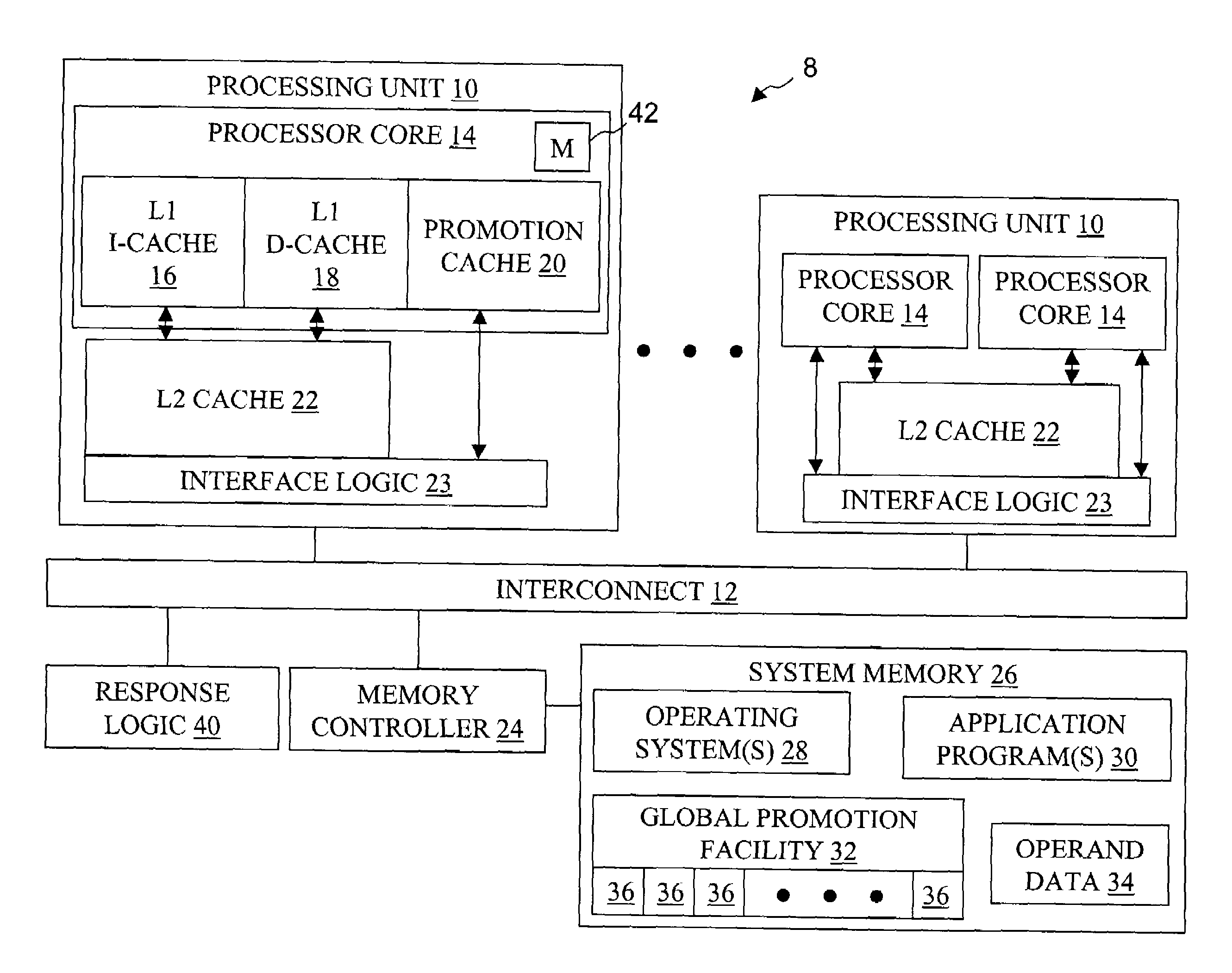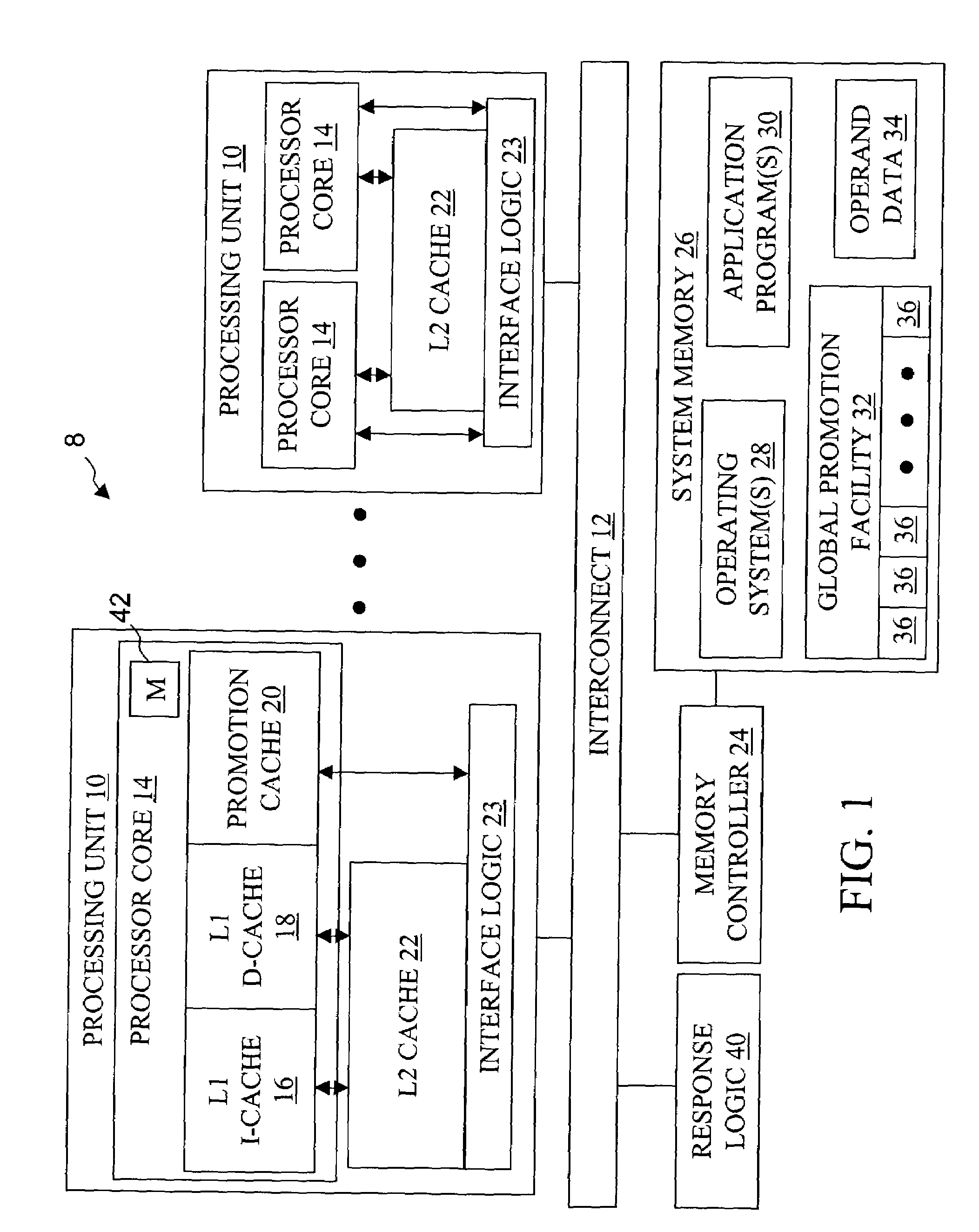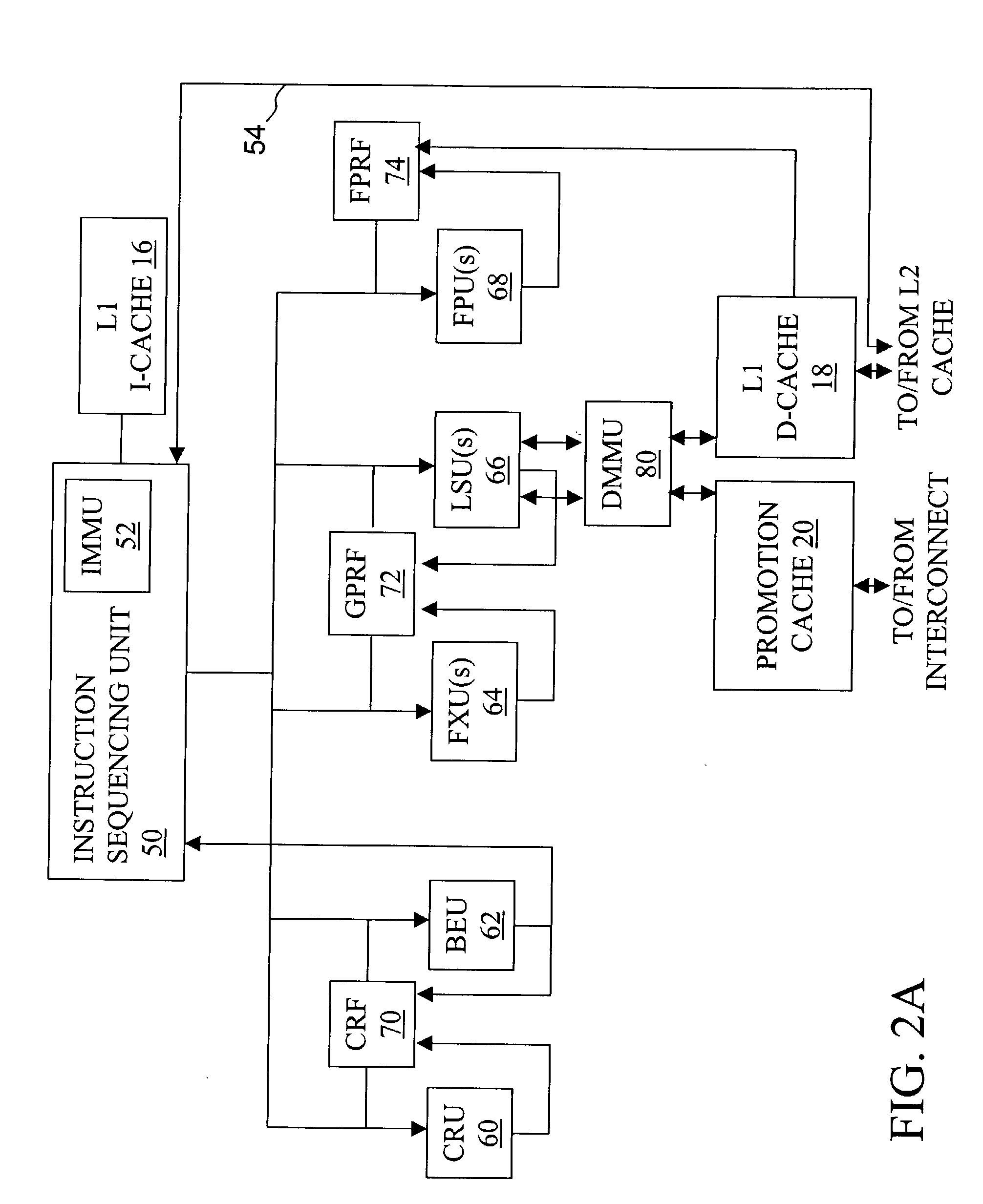High speed promotion mechanism suitable for lock acquisition in a multiprocessor data processing system
a multi-processor data processing and promotion mechanism technology, applied in the field of data processing, can solve the problems of reducing the overall system performance, reducing the efficiency of typical lock acquisition and release sequence, and increasing the processor size and complexity, so as to achieve high lock acquisition overhead, enhance parallelism, and increase the overhead of acquiring locks
- Summary
- Abstract
- Description
- Claims
- Application Information
AI Technical Summary
Benefits of technology
Problems solved by technology
Method used
Image
Examples
first embodiment
[0046]Referring now to FIG. 2A, there is depicted a more detailed block diagram of a processor core 14 in accordance with the present invention. As shown, processor core 14 has an instruction sequencing unit 50 that fetches instructions for processing from L1 I-cache 16 utilizing real addresses obtained by the effective-to-real address translation (ERAT) performed by instruction memory management unit (IMMU) 52. Of course, if the requested cache line of instructions does not reside in L1 I-cache 16, then ISU 50 requests the relevant cache line of instructions from L2 cache 22 via I-cache reload bus 54.
[0047]After instructions are fetched and preprocessing, if any, is performed, instructions are dispatched to execution units 60–68, possibly out-of-order, based upon instruction type. That is, condition-register-modifying instructions and branch instructions are dispatched to condition register unit (CRU) 60 and branch execution unit (BEU) 62, respectively, fixed-point and load / store i...
second embodiment
[0049]In the processor architecture depicted generally in FIG. 2A, various execution units (and therefore differing instruction sequences) may be employed to access promotion cache 20 to acquire and release locks and perform other inter-component coordination functions. For example, FIG. 2A illustrates an implementation in which LSU 66 accesses promotion bits 36 (within optional promotion cache 20 or from global promotion facility 32) in response to special-purpose or general-purpose load and store instructions. FIG. 2B depicts an alternative second embodiment in which BEU 62 sets a promotion bit 36 (e.g., to acquire a lock) within optional promotion cache 20 or within global promotion facility 32 in response to a special branch instruction, and LSU 66 resets a promotion bit 36 (e.g., to release a lock) in response to a store instruction. Of these and other design options within the scope of the present invention, differing designs may be preferable, depending upon implementation-sp...
PUM
 Login to View More
Login to View More Abstract
Description
Claims
Application Information
 Login to View More
Login to View More - R&D
- Intellectual Property
- Life Sciences
- Materials
- Tech Scout
- Unparalleled Data Quality
- Higher Quality Content
- 60% Fewer Hallucinations
Browse by: Latest US Patents, China's latest patents, Technical Efficacy Thesaurus, Application Domain, Technology Topic, Popular Technical Reports.
© 2025 PatSnap. All rights reserved.Legal|Privacy policy|Modern Slavery Act Transparency Statement|Sitemap|About US| Contact US: help@patsnap.com



